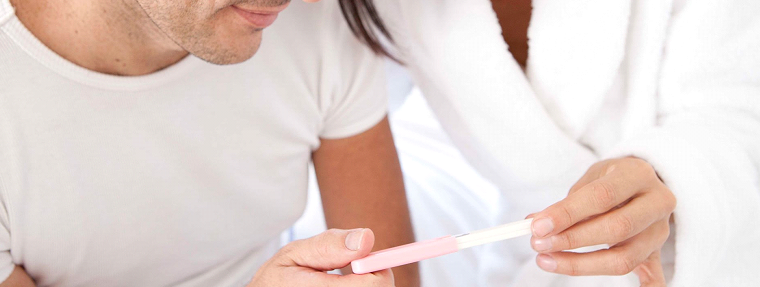
About success Rates By Age: Understanding The Factors Affecting Conception And The Real Odds Of Getting Pregnant
For many couples, trying to conceive can be an exciting and sometimes stressful time. While some may find it easy to get pregnant, others may struggle with fertility issues. Understanding the actual odds of getting pregnant is important to manage expectations and to take the necessary steps to increase the chances of conception.
Factors Affecting Fertility
About success rates by age, it’s important to understand the factors that affect fertility. These include:
Age – Age is one of the most significant factors affecting fertility. Women are born with a finite number of eggs, and the quantity and quality of eggs decrease with age. As a woman approaches menopause, the remaining eggs become less viable, making it more challenging to conceive.
For men, the quality and quantity of sperm may decline with age, affecting the chances of conception. However, men continue to produce sperm throughout their lives.
Health – Certain health conditions can affect fertility. Polycystic ovary syndrome (PCOS) is a hormonal disorder that can affect ovulation, making it more difficult to conceive. Endometriosis, a condition where the tissue that lines the uterus grows outside of it, can also impact fertility.
Other medical conditions, such as thyroid disorders, diabetes, and autoimmune disorders, can affect fertility. It’s essential to manage these conditions with the help of a doctor to increase the chances of conception.
Lifestyle – Lifestyle factors can also affect fertility. Habits such as smoking, excessive alcohol consumption, and being overweight or underweight can impact fertility. These habits can affect hormone levels and disrupt the ovulation process, making it more difficult to conceive.
In addition, exposure to environmental toxins such as lead, pesticides, and chemicals can also affect fertility.
Timing – Timing is crucial when it comes to conception. Conception is most likely to occur during ovulation, which happens approximately once a month. Ovulation occurs when the ovary releases an egg that travels through the fallopian tube, where it may be fertilized by sperm. Timing intercourse during the fertile window, which is typically the five days leading up to ovulation, can increase the chances of conception.
Other factors that can affect fertility include:
⦁ Hormonal imbalances
⦁ Polycystic ovary syndrome (PCOS)
⦁ Endometriosis
⦁ Pelvic inflammatory disease (PID)
⦁ Fibroids
⦁ Cancer and cancer treatments
⦁ Obesity
⦁ Smoking
⦁ Alcohol and drug use
⦁ Stress
The Odds of Getting Pregnant:
The odds of getting pregnant depend on many factors, including age, health, timing of intercourse, and the presence of any fertility issues. On average, a healthy couple has a 20-25% chance of getting pregnant each month. However, this percentage decreases with age.
Success Rates by Age
As mentioned, age is one of the biggest factors affecting fertility. Want to know https://ifg-ivf.com/blog/ivf-success-rates-by-age-what-are-the-actual-odds-of-getting-pregnant.html, here are the success rates of conceiving naturally by age:
Age 20-24: 86%
Age 25-29: 78%
Age 30-34: 63%
Age 35-39: 52%
Age 40-44: 36%
Age 45 and above: 5%
These percentages are based on a couple trying to conceive naturally for one year. After a year of trying without success, it’s recommended to seek medical advice.
It’s worth noting that success rates can vary depending on individual circumstances, such as health and lifestyle factors. For example, a woman who is 35 years old but in excellent health and has a regular menstrual cycle may have a higher chance of conceiving than a woman of the same age with underlying health issues.
Conception Methods
For those struggling with fertility issues or who have been trying to conceive for an extended period, there are various assisted reproductive technologies (ART) available. These include:
Intrauterine insemination (IUI) – Sperm is placed directly into the uterus during ovulation.
In vitro fertilization (IVF) – Eggs are fertilized outside the body and then transferred to the uterus.
Intracytoplasmic sperm injection (ICSI) – A single sperm is injected directly into an egg to fertilize it.
Success rates for ART vary depending on individual circumstances and the type of procedure. For example, the success rate of IVF for women under 35 is around 40-45%, while the success rate for women over 40 drops to around 5-10%.
Conclusion
The actual odds of getting pregnant depend on several factors, including age, health, and lifestyle. While success rates decline with age, it’s important to remember that everyone’s circumstances are unique, and some may have a higher chance of conceiving naturally than others.
For those struggling with fertility issues, there are various assisted reproductive technologies available. While these methods can be expensive, they can significantly increase the chances of conception.
Overall, understanding the actual odds of getting pregnant can help couples manage expectations and take necessary steps to increase their chances of conceiving.







